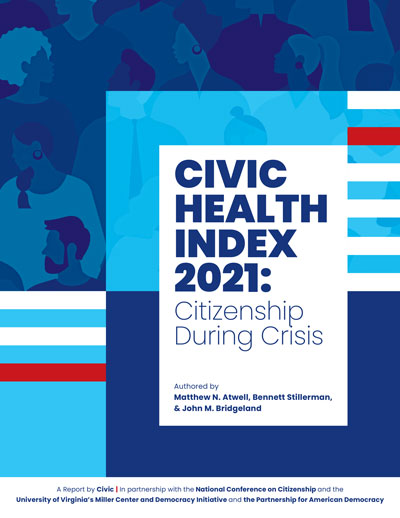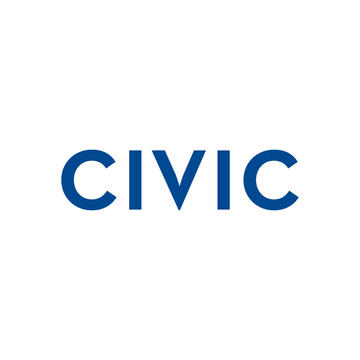The Civic Health Index 2021
An exploration of American citizenship during crisis
Since 2006, the National Conference on Citizenship (NCoC), Civic, and other partners have assembled top experts and institutions to release the Civic Health Index to better understand an array of civic health indicators that are measurable and movable.
Right now, the United States is facing some of the most significant challenges in its history.
NCoC defines “civic health” as the way that communities are organized to define and address public problems. Previous reports sought to identify challenges of citizenship and community, including civic deserts, and those working to address them, including “Netizens,” veterans, and millennials. Right now, the United States is facing some of the most significant challenges in its history. COVID-19 is reshaping institutions and civic life; the nation continues to reckon with its long history of systemic racism; and U.S. democracy is showing cracks.
The country’s ability to address these public problems is paramount. It requires an understanding of present trends in the United States’ civic health, which this report explores in detail.
Overall, most trends in civic health have been on the decline, including stagnating levels of civic education, dwindling community group membership, and worsening interpersonal and institutional trust. At the same time, there are signs of a vibrant civic nation with increased rates of volunteerism, political knowledge, and casting ballots, and millions of Americans joining together to protest police violence against Black Americans and other communities of color. These trends suggest a duality in the nation’s civic health.
Key findings include
- It is estimated that 15 to 26 million people across 7,750 protests in 2,440 locations took to the streets in support of racial equity and equality in the summer of 2020, making these protests the largest in the country’s history.
- The 2020 elections saw 66.8 percent of Americans cast ballots—the highest voter turnout of the 21st century. This marks an increase of 5 percentage points from 2016 and the largest increase in voters between two presidential elections ever recorded, with 17 million more people voting in 2020 than in 2016.
- For the first time, it was less common for voters to cast a ballot in-person on Election Day than vote early or by mail, in part due to COVID-19. Sixty- nine percent of Americans cast a nontraditional ballot, meaning they either voted by mail and/or before Election Day. This marks the highest rate of nontraditional voting since questions regarding voting method have been included in the Current Population Survey.
- COVID-19 emerged as another fault line for the American people. In an international study, Americans were more likely to say they abided by COVID-19 rules “not very closely” or “not at all closely” than five of the other six countries in the study. Respondents from the United States were also most likely to say that during the pandemic, people’s concern for others worsened, that the country was becoming more divided, and that they feel disappointed about the country ’s handling of the virus.
- Membership of large-scale civic institutions, including unions, churches and other religious organizations, and daily newspapers, continued to decline. As membership in community organizations continued to dissipate, the percent of Americans that live alone remains on the rise.
This report explores other important trends in civic health across four broad categories: political and civic engagement, group affiliation, social comity, and information and knowledge.
The United States is at an inflection point. Crises have emerged that threaten the future of the nation.
Throughout, this report shares examples of individuals and institutions working in communities across the nation to expand civic life. In addition, strategies to increase civic engagement are featured, including
- Boosting civic education through rigorous state standards and expanded funding for civic education in the United States;
- Strengthening national service opportunities through service year fellowships and expanding service- learning in K-12 education;
- Bolstering community institutions through improved civic infrastructure; and
- Harnessing the power of the internet and technology to enhance civic engagement.
The United States is at an inflection point. Crises have emerged that threaten the future of the nation. To emerge stronger, it will require a renewed focus on increasing all aspects of civic health to address our shared problems.

